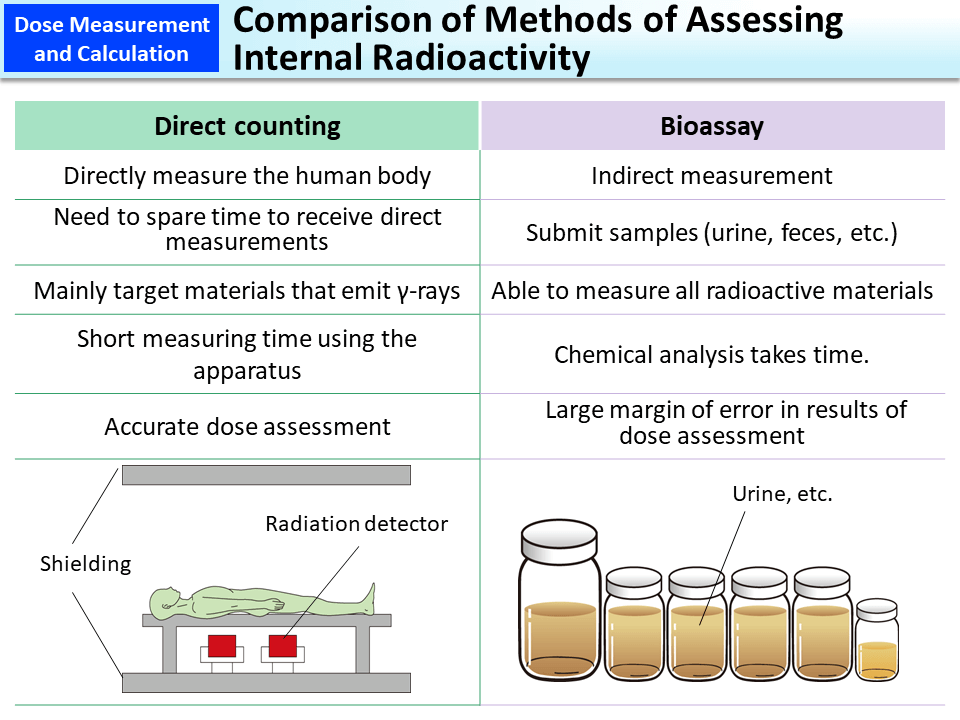Comparison of Methods of Assessing Internal Radioactivity
In direct counting, the longer the measuring time, the more accurate values can be obtained. However, external measuring instruments also measure radiation from the environment while measuring radiation from the human body, so if measurements are carried out in locations with high ambient dose rates, sufficient shielding against environmental radiation is required. These instruments cannot measure radioactive materials that do not emit γ-rays.
Bioassays can measure all kinds of radioactive materials but cannot provide accurate numerical values after a single sampling and it is necessary to prepare samples for several days (urine, feces, etc.). Given that the amount of radioactive materials discharged varies depending on individuals and on their health conditions and amounts of food consumption, the margin of error is considered to be larger than for direct counting.
For both methods, if the time when a detected radioactive material was taken in cannot be clearly determined, calculation results will have a larger margin of error.
- Included in this reference material on March 31, 2013
- Updated on March 31, 2015

